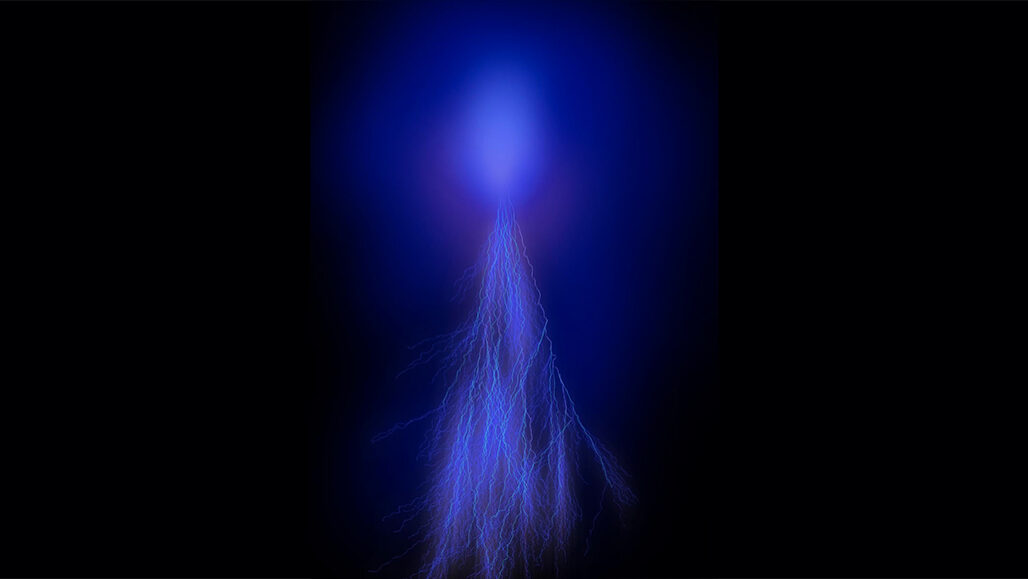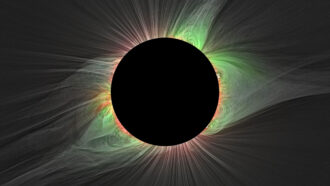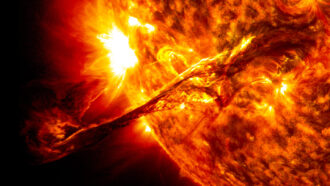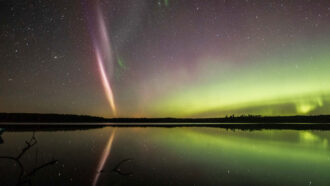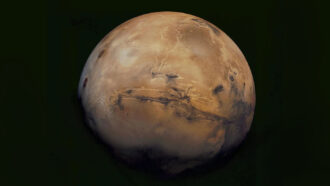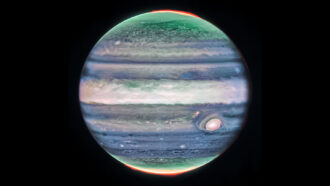atmosphere: The envelope of gases surrounding Earth or another planet.
cloud: A plume of molecules or particles, such as water droplets, that move under the action of an outside force, such as wind, radiation or water currents. (in atmospheric science) A mass of airborne water droplets and ice crystals that travel as a plume, usually high in Earth’s atmosphere. Its movement is driven by winds.
electric field: A region around a charged particle or object within which a force would be exerted on other charged particles or objects.
gas giant: A giant planet that is made mostly of the gases helium and hydrogen. Jupiter and Saturn are gas giants.
hydrogen: The lightest element in the universe. As a gas, it is colorless, odorless and highly flammable. It’s an integral part of many fuels, fats and chemicals that make up living tissues. It’s made of a single proton (which serves as its nucleus) orbited by a single electron.
Jupiter: (in astronomy) The solar system’s largest planet, it has the shortest day length (10 hours). A gas giant, its low density indicates that this planet is composed of light elements, such as hydrogen and helium. This planet also releases more heat than it receives from the sun as gravity compresses its mass (and slowly shrinks the planet).
lightning: A flash of light triggered by the discharge of electricity that occurs between clouds or between a cloud and something on Earth’s surface. The electrical current can cause a flash heating of the air, which can create a sharp crack of thunder.
mesosphere: The highest part of Earth’s atmosphere where all of the gases are all still well-mixed, not merely layered on the basis of each gas’s mass. This layer is right above the stratosphere. It’s the uppermost layer of the atmosphere with enough gas to cause friction for incoming space rocks. That’s why this region is where most meteor’s burn up. It varies somewhat in height, but tends to span from 64 to 85 kilometers (31 to 53 miles) above Earth’s surface. The upper level of this part of the atmosphere is known as the mesopause, or Karman line.
millisecond: A thousandth of a second.
molecule: An electrically neutral group of atoms that represents the smallest possible amount of a chemical compound. Molecules can be made of single types of atoms or of different types. For example, the oxygen in the air is made of two oxygen atoms (O2), but water is made of two hydrogen atoms and one oxygen atom (H2O).
nitrogen: A colorless, odorless and nonreactive gaseous element that forms about 78 percent of Earth's atmosphere. Its scientific symbol is N. Nitrogen is released in the form of nitrogen oxides as fossil fuels burn. It comes in two stable forms. Both have 14 protons in the nucleus. But one has 14 neutrons in that nucleus; the other has 15. For that difference, they are known, respectively, as nitrogen-14 and nitrogen-15 (or 14N and 15N).
planet: A large celestial object that orbits a star but unlike a star does not generate any visible light.
thermosphere: An upper region of the atmosphere that extends from 85 to 600 kilometers (53 to 372 miles) above Earth’s surface. In the thermosphere, temperature increases with height because of the sun’s energy. It's upper boundary is known as the thermopause.
ultraviolet light: A type of electromagnetic radiation with a wavelength from 10 nanometers to 380 nanometers. The wavelengths are shorter than that of visible light but longer than X-rays.
